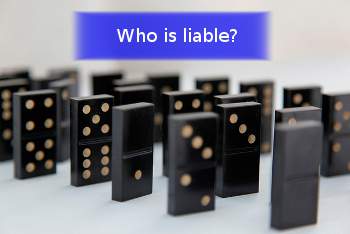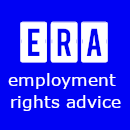What does vicarious liability mean for an employer ?
 In order to answer that let's look at the definition of vicarious liability in Ireland.
In order to answer that let's look at the definition of vicarious liability in Ireland.
Under Irish employment law, employers are vicariously liable for the acts or ommissions of an employee, when they occur in the course of that person's employment.
These acts can comprise bullying and harassment, discriminatory behaviour, defamation and breach of copyright, to name but a few.
The Employment Equality Acts 1998 – 2011 places an initial liability on employers for actions by employees which are discriminatory, even if the employer does not know about it or does not consent to it. The onus of proof is on the employer to show that they took reasonable measures to prevent the discriminatory action. If the employer can prove that, then they will be able to avoid vicarious liability.
This is similarly the case with the Equal Status Act 2000
An Irish Supreme Court vicarious liability judgement
In Lynch v Binnacle Limited t/a Cavan Co-Op Mart [2011] IESC8 (Click here for full judgement) the Irish Supreme Court examined the law on vicarious liability when dealing with an appeal involving an employee (Mr Lynch) who suffered personal injuries in the course of his employment. He was employed as a drover in a mart operated by his employer Binnacle Limited t/a Cavan Co-Op Mart. In the course of his employment he had to operate a weighbridge system with the assistance of two fellow workers. On this occasion, both of the workers had left their post for a short period,to look after their own affairs at the mart. Mr Lynch had to enter a pen in which a bullock was present, in order to facilitate access into the weighbridge by lifting a gate. He would not have had to carry out this dangerous manoeuvre if his two work colleagues had been present. The bullock kicked Mr Lynch in the groin, which lead to the loss of his right testicle.
The Arguments
It was submitted on behalf of the Apellant (Mr Lynch) that there was an unsafe system of work at the time that he was injured. There was no evidence of any supervision to ensure that the safe system of work was maintained. The safe system broke down when the two employees left. It was submitted that the action of the two other employees caused the injury. It was the authorised act of one of the employees to lift the gate. His failure to do an authorised act left the employer vicariously liable. The employer should have ensured that there were sufficient employees at their posts to carry out the tasks safely at all times.
On behalf of the Respondent (Binnacle Limited t/a Cavan Co-Op Mart) it was submitted that it was not in breach of its duty to provide a safe place and safe system of work. The Respondent had addressed all foreseeable risks inherent in the work. It was submitted that it was not reasonably foreseeable that both employees would absent themselves at the same time, with the knowledge of the appellant. It was also submitted that it was unforeseeable that the Appellant, with 30 years experience would put himself in such a position of danger. The respondent claimed that the Appellant was the author of his own misfortune.
The Judgement
The respondent had a duty to provide a safe system of work. The system became unsafe when the two employees left. There was no provision for this situation. There was no procedure for the other employees to follow in those circumstances. There was no evidence of any supervision by the employer. The employer is vicariously liable for the actions of the two employees, who absented themselves form their work and so created an unsafe system of work.
There was a finding of contributory negligence, based on the fact that the appellant was an experienced drover who should have known of the risks involved and yet continued with the task. A contributory negligence of 33% was assessed. This means that whatever amount of damages is awarded, it will be reduced by 33%
A recent UK vicarious liability case
In the case of Mr AM Mohamud v WM Morrison Supermarkets plc [2016] UKSC 11 the UK Supreme Court considered the position of the vicarious liability of employers.
The issue
Mr Mohamud was violently assaulted by a petrol pump attendant, employed by Morrisons. He claimed that the supermarket should be vicariously liable for the actions of its employee.
What happened
The claimant went to Morrisons petrol station in Birmingham. He asked if the garage could print off some images from a USB stick.
Mr Khan, who worked behind the counter responded with foul and abusive language. He continued to abuse Mr Mohamud and ordered him to leave.
He followed Mr Mohamud to his car, opened the passenger door and told him in a threatening manner never to come back. Matters escalated resulting in an unprovoked assault on Mr Mohamud, in spite of Mr Khan's supervisor telling him to stop.
At trial and appeal Morrisons were held to be not vicariously liable. The Supreme Court overturned this and held Morrisons vicariously liable for the actions of its employee.
The court used the “close connection “ test, which was introduced in the UK following a 2001 case.
It held that it was within the “ field of activities” assigned to Mr Khan.
The court was at pains to point out that each case must be examined on its own merits and circumstances.
What steps can employers take to reduce the risk of vicarious liability for the actions of their employees?
You must be able to show that you have taken all reasonable steps to stop the action from occurring.
You have to start with an up to date equality policy document, which is shared effectively with all staff. It is not enough to have a policy, it must be communicated to the staff in such a way that they act upon it. There is a clear need for staff training in the area of discrimination in the workplace.
What should I do next?
You should take a fresh look at what measures you have in place to prevent discrimination and other unlawful activities taking place at work. Are they up to date? If in doubt, please contact us using the orange Yes! Tell Me More button below and we will help you minimise the risk of being held vicariously liable for the wrongdoings of your employees.
Spread the knowledge. If you found this article useful, please like and share using any of the social buttons below.






